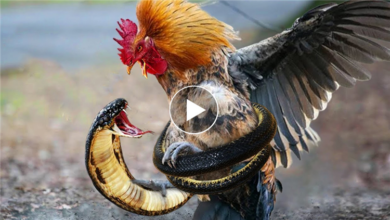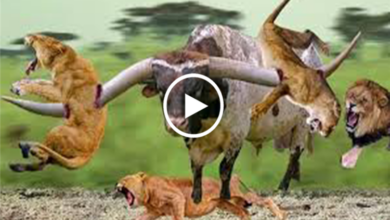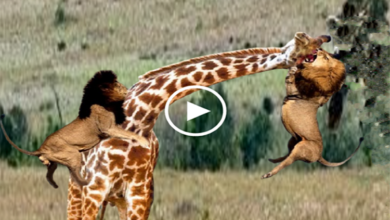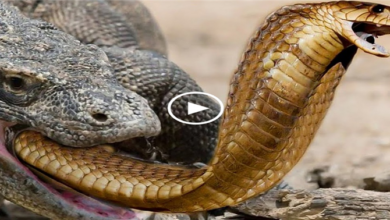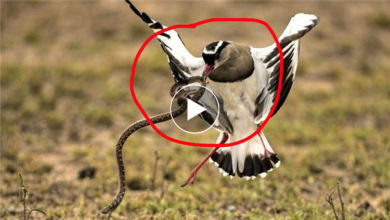“Hedgehog’s Perilous Play: Leopard Learns the Hard Way”

A video recorded in Kruger National Park (South Africa) shows that not every hunt is perfect, when the prey is indifferent, and the attacker suffers painful consequences.
In the video, the jaguar was hungry when he suddenly noticed two porcupines moving slowly next to him. Immediately, leopards actively rush to attack the enemy with sharp claws.
If compared in speed as well as power, the jaguar is definitely far ahead of the hedgehog. However, this inexperienced leopard did not know the danger of the small beast, coming from the spiky thorns growing on its back.

As a result, the leopard had to receive a “painful lesson” when there were many long spines of the hedgehog stuck on the head, chest and abdomen.
The jaguar had to give up the hunt, then find a deserted place and endure the pain of pulling the porcupine thorns out of its body.
However, the soft abdomen of the leopard appeared to have been stabbed too much, causing it to bleed non-stop.

According to some experts, receiving such injuries is very dangerous for jaguars. If the thorns pierce the internal organs, the animal can become infected and die.
The mane porcupine is a subspecies of the short-tailed porcupine (Hystrix brachyura) distributed in many countries around the world. They are large rodents. Weight from 20-27kg, average weight from 15-20kg. There are even children weighing up to 26kg.
They are called mane hedgehogs because they possess stiff, pointed hair, 30-60cm long, growing straight back.
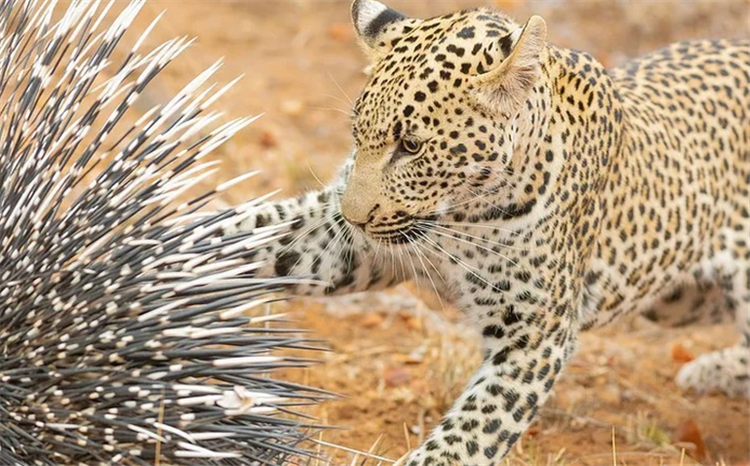
When born, the porcupine’s feathers look like silken threads covering their succulent body. Then, the water fades away, the skin dries up, and the hairs stand up.
Gradually, those hairs keep getting longer and stiffer. In time, that hair will turn into giant thorns, both hard and sharp.
The hedgehog’s fur is a powerful self-defense weapon. When encountering enemies, hedgehogs often raise their feathers like a ball of spikes to protect their body.

The common strategy of the hedgehog is to turn around and run away, then suddenly stop, causing the enemy while in pursuit to be stabbed in the face and front body by the feathers.
These hairs are secreted by the sebaceous glands, which keep them shiny and can contain toxins. When pierced by porcupine feathers, the body feels very sharp pain in the stab wounds.

